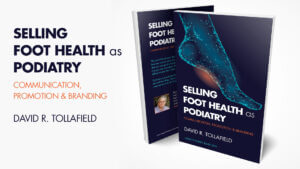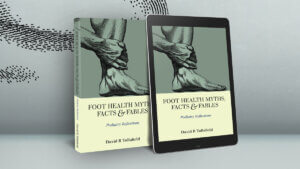Good fact sheets follow good consultations
If you have read my short article Getting the best from Clinical Information, here is the follow-up article offering a little more meat. What should you ask from a fact sheet? The answer must be equally simple. Factsheets should be well written, have few spelling mistakes and be easy to read. They should be laid out well and ideally not photocopied to death. The factsheets show that the clinician cares as much about you as the information offered.
The Basic Toolkit
This should help you better understand the consultation. The factsheet will offer information about your care to help you make a choice. You do indeed have a choice. Having been a patient as well as a consultant, I understand what I want and need. Don’t be under any illusion that I am any more likely to be a worse patient than you will be!
There is a balance between using complex words i.e bunion is simple. Hallux valgus may be harder, and hallux abducto-valgus takes us to Wonderland! A bunion is a bump and is often thought of as part of the bent big toe. However, many do not mind the more complex term hallux valgus. When we call it hallux abducto-valgus all we mean is that the toe rotates and bends together. This might be too much information as we need to know (1) that this is a deformity and (2) if can it be fixed. (3) how easy is the treatment, how will it affect me and (4) what do I need to know about the process?
Avoid what patients say
“I’ll leave it to you as you’re the expert”, the patient says, adding naively – “You are the expert.” I used to cringe at this inaccurate belief of being an expert because I was often the last resort for foot pain, and many good people had already tried their best. But, as a professional, I had to instil confidence. Assuming the consultation or if you like the precious period shared with your healthcare professional was helpful, you will need an aid-memoire to take away so you can tell those nearest and dearest what was said and what was expected.
“I am your last resort! I’ve been everywhere, and I hope you can make me better.” You are now creating high expectations when you need to ask, “Is my foot fixable, and if not, is there anything that will help?”
Now, a good clinician will tell you what is possible and what is definitely not possible and maybe advise someone else if he or she feels you might be better off.
I had a patient referred to me who had absent circulation. Now I could fix joints and deformities, limit the pain and protect vital tissues, but I could not make his circulation better. I found out she had a blockage at the knee, and he needed a vascular surgeon. What had just happened was that I could figure out the problem but fixing the problem was outside my skill set. However, I knew someone who could help. This is what being a specialist is – NOT necessarily fixing everything. We work as teams in modern medicine to offer patients a broad package of care. GP to podiatrists, podiatrist to a specialist.
Enter the fact sheet.
- So it acts as an aid to cover those parts of the consultation that need highlighting, things you need to know.
- It provides valuable data that can be used to make a decision
- It fills in the gaps of any conversation but covers the most important parts that you MUST know and it should help you consider your priority. When to have something done.
What a fact sheet does not do
It does not answer all of your questions. Everyone has different views, and a small percentage of patients decline details. The two main professional bodies with a deep interest in foot surgery are the Royal College of Podiatry and the British Orthopaedic Association. Both offer valuable information, but of course, like any information and those published by private (independent) hospitals, the information is often simplified. There is nothing wrong with this until you must make a surgical decision.
Drifting to the internet and ‘searching’ for information you will find plenty. I did this when I had back surgery, and ‘ping’ it was North American / USA sources. Again, there is nothing wrong with this as there is plenty of material, but does US English translate to British English and vice versa? There is no one reliable system so this is why I wrote a book, Morton’s neuroma and Bunion Behind the Scenes to fill in the gaps. Given so many conditions, even for the foot, it would be difficult to cover everything, but my website offers a reasonable range.
The Patient Journey

The Patient Journey is unique; some patients write about their experiences in detail. The day-to-day, even hour-to-hour, step-by-step description of human routine brings life into full colour, expanding on the shades of those realities that can fill many with dread. Harnessing a story with the facts and analysing the stages is important. In some ways, publishing a diary that suggests that everything went well is not as helpful as one might think. We know that treatment pathways, as we call the journey, are not garnered by smooth travel.
While I am a great fan of fact sheets, we must rely on the specialist’s advice and any other information offered. If you are like me, I devour information with relish, but there comes a point when only you, as the patient, can make your mind up.
Fact sheet example
Here is an example of a fact sheet about surgery on a rigid toe joint. Note that it was published in 2018, and it was designed to be printed off or read on a laptop rather than a Smartphone or tablet. It provides some key information, but some areas are left out that the patient and his/her specialist need to fill in. The next example covers bunion surgery as an article which will open up on SmartPhone and tablets: What you really need to know after bunion surgery?
Fact sheets cannot provide all the information because they, for the most part, cover information from many sources. My factsheets are pooled from over 100 centres and, in this case, cover several thousand patient feedback reports based on the published data called PASCOM-10, which is specific for feet. The Royal College of Podiatry owns the system.
The other problem with factsheets is that once material runs to many pages of typed lines, it is easy to put this aside for another day. Headings help guide you to the right place. Multiple sheets (probably more than 5) require an INDEX to guide the reader. The modern use of hyperlinking is wonderful but cannot work with a typed sheet or a portable digital file (PDF).
Good factsheets follow good consultations
A good factsheet tells you something about the condition and how it occurred. I will call this knowledge you desire; what, why, how…? You may have been born with a hammer toe, or it may have occurred during your life. An infection may have come from outside or inside your body. How does it impact you? Well, treatment may cure you in 90% of cases. This percentage is not a guarantee but shows a good chance of success.
The next thing you will want to know is whether it will impact your life; for how long can I go to work – or even should I go to work? And can I go on holiday, go dancing, go to the theatre, and can I cope, and will it worsen? As an adult, you have responsibilities if you have a family or you are needed as a core household member as a carer. These factors may impact your life, so prior knowledge is important before embarking on a treatment plan that will likely affect you.

Is there something I can do to help myself? Is it practical to fix the problem myself? Do I take medication or have something provided to help me get around—a different shoe, stick, dressing, or removable appliance? Self-help is desirable but may not fix the problem but only minimises its effect. If treatment cannot wholly remove pain or deformity or allow complete restoration to normal, you should know this and how to cope with some disability.
Investigations
The foot is part of the skeleton, also known as the musculoskeletal system (bones and joints, muscles and ligaments). Do you need an investigation? X-ray, blood examination, urine and so forth. An X-ray won’t tell us about skin and soft tissue, only about the hard stuff and joints. Why not read – Does it matter which foot bone you break?
Treatment
Do nothing, do something, rest? Use medication (pain and anti-inflammatories), sort out an infection, apply dressings or splinting, buzzy electronic treatments (ultrasound or extracorporeal treatment), add heat or cold, perform an injection (sometimes steroids) or carry out some procedure we call invasive to mean surgery. Modern clinical practice now discusses treatment plans and pathways with patients, e.g. digital neuroma- in this article, there is an example of a clinical algorithm to treat a nerve.
Planning your treatment is a process that requires your permission, your wishes and your understanding, which we call consent. Your written information will add to your confidence but don’t forget that it must be read and understood and that you are free to ask questions. If the podiatrist is busy, ask if you can send an email or leave a message for the clinician to get back to you.
Not included on the clinical factsheet
The following information should be available. How much is it if I have to pay or want to pay? This won’t be in a fact sheet but it should be available as it is now a condition of independent health provision that no patient should enter into any contract to investigate or have treatment without knowing the cost.
The NHS of course, does require any direct payment for treatment. Additional information that might follow includes what to know about admission, going home, physiotherapy, and emergency call numbers, all provided outside the factsheet. In some ways, this information should be kept separate so you can focus on the importance of each element.
What form can information take?
You may be given a fact sheet or information about your care in several ways.
- This might comprise a drawing with key facts labelled. This will list your choices and highlight any risks.
- A leaflet will have a list of information offering a concise summary of key elements you need to know.
- A dedicated A4/A5 sheet may be produced from the internet or as a Word document printed with or without diagrams.
- Some organised specialities have booklets, and others may even have published books or recommend information on the internet.
- I have used the video film YouTube in my series of electronic factsheets launched from my website. The material is often American (US), so I have selected quality narration, avoided music, considered only clear images, and used material that is not overly gory and should ideally run for no more than 4-5 minutes. I have made some YouTube films for a little longer than 5 minutes. Here is an example bunion pad.
- An e-format allows much information to fit into a smaller space and remain obscured until required.
- Casting your eye down the sheet, you want to know what effect any treatment decision might have. It helps to appreciate that all surgery carries risks and to place this in the correct context.
- Is a risk HIGH but has a LOW EFFECT and quickly resolved, or is the risk LOW, but if it arises, becomes a PERMANENT part of your life?
Your clinician may suggest you Google the information but having a website or link is better. Many electronic documents, as found on this website, are linked to organisations such as NICE, the National Institute for Health and Care Excellence, NHS Choices or The Royal College of Podiatry or even ‘YouTube’ where appropriate. One of my recent findings was a website published by an American-Canadian source, although this tends to be biased toward surgery FootEducation.com
INFORMATION CHECKLIST
- ALWAYS read information through before a new consultation.
- Make your notes if a return appointment is indicated. If you receive the information in the post, it is for you, NOT YOUR MEDICAL DOCTOR. One patient received such information after consultation and failed to read it because it had her doctor’s name on the letter.
- Read the information through, as this saves time, keeps you focused, and prevents rambling or anxiety about missing anything.
- You want the time you spend with your healthcare professional, be it a GP, Podiatrist, or Surgeon, to be profitable.
- Make sure you ask if there is a non-surgical approach.
- Surgery carries risks but can benefit many foot conditions, some of which I will cover under Factsheets. Read the risks and impact factsheet (click ON THE BLUE to help you with consent).
OUR AIM
To provide reassurance, choice, knowledge, understanding of the consequences and the ability to act upon the decisions made confidently.
We call this informed consent.
Thanks for reading ‘What should you ask from a Fact sheet’ by David R Tollafield.
Published by Busypencilcase Communications. Est. 2015 for ConsultingFootPain

The article on factsheets has been incorporated in Selling Foot Health as Podiatry written for clinicians (2020) and available on Amazon books

More information about foot health can be found in this 2021 publication. Foot Health Myths, Facts &Fables. Available from Amazon books

Published by Busypencilcase Reflective Communications Est. 2015
![]()
First published April 2019. Reviewed 28 March 2021



Trackbacks/Pingbacks